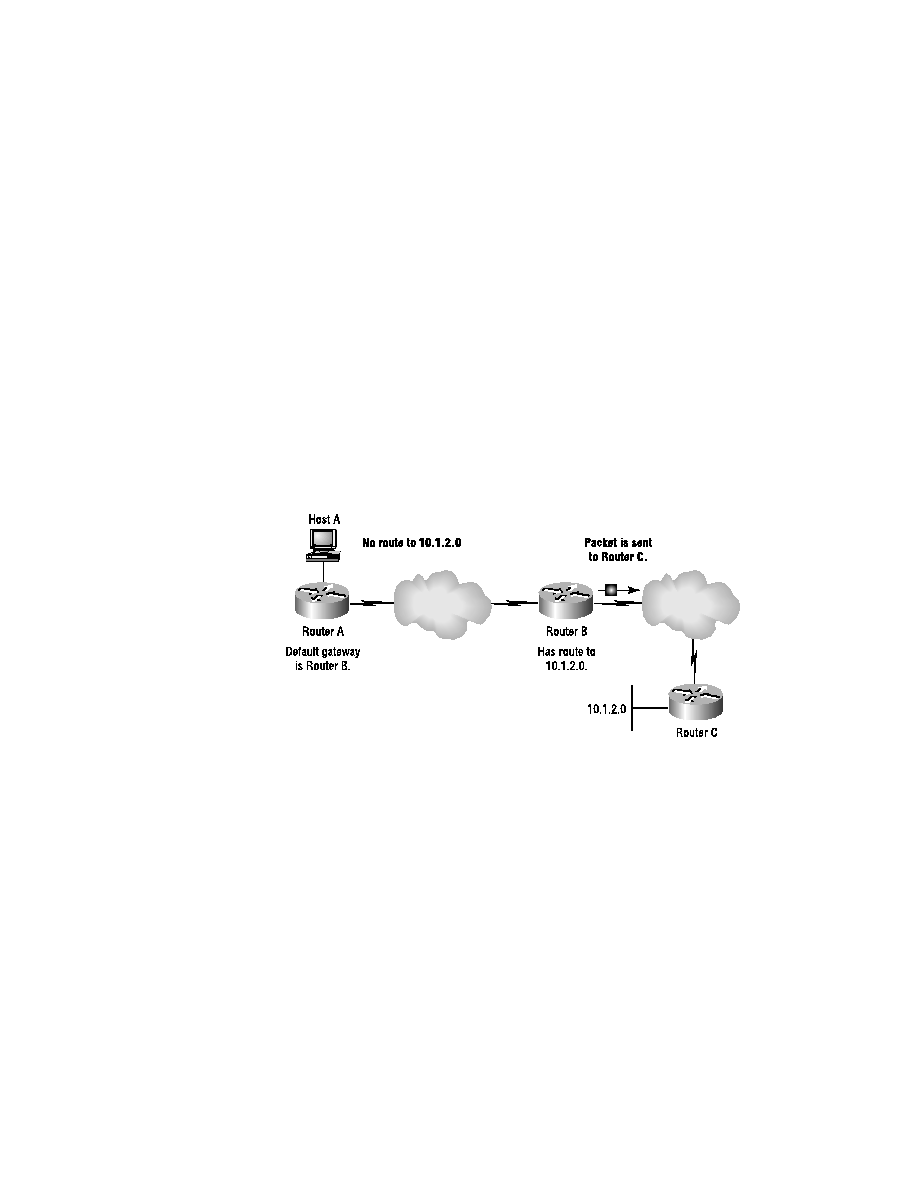
resort tells the router that if it doesn't have a route to a given network, it
should send the packet out the specified interface, or default gateway.
packet from Host A that is destined for network 10.1.2.0. The problem is
that Router A does not have a route for 10.1.2.0. The only chance of get-
ting the packet forwarded to network 10.1.2.0 is to send it to Router B and
hope that Router B has a route to network 10.1.2.0. Router A considers
Router B as its default gateway, so it sends the packet to Router B. For this
example, assume that Router B does have the route and sends the packet on
its way.
gateways are used on TCP/IP hosts so they do not have to keep individual
route tables. All hosts need to point to a router on the same network to be
used as the default gateway.